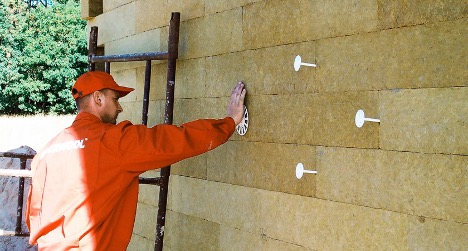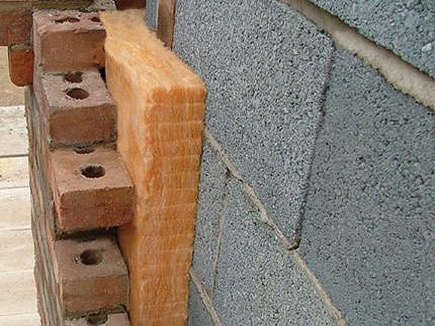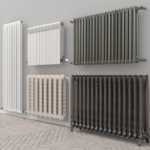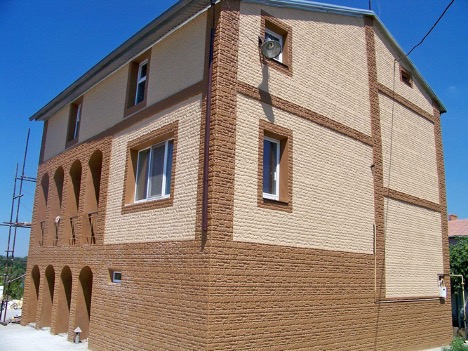Insulation of a house made of expanded clay concrete blocks: how to insulate the outside
Insulating a house made of expanded clay concrete blocks is an important process that is necessary to improve the thermal insulation properties of a home. Expanded clay concrete blocks, due to their porous structure, have certain thermal insulation properties, but for climatic conditions with cold winters this may not be enough. Effective insulation helps reduce heat loss, save on heating costs and increase living comfort.

The content of the article
- How to insulate a house made of expanded clay concrete blocks from the outside
- External finishing of expanded clay concrete walls
- Wall structure made of expanded clay concrete blocks with insulation
- Insulation thickness for walls made of expanded clay concrete blocks
- Mistakes when insulating a house made of expanded clay concrete blocks
- conclusions
How to insulate a house made of expanded clay concrete blocks from the outside
The choice of material for insulating expanded clay concrete walls outside depends on several factors, including climatic conditions, budget and personal preferences. Let's look at the most popular options:
- Mineral wool has good thermal insulation and sound insulation properties.
- Expanded polystyrene is a lightweight and effective insulation material that is easy to install.
- Extruded polystyrene foam is a denser and more durable version of polystyrene foam, excellent for extreme climate conditions.
- Polyurethane foam is used in the form of a spray and forms a seamless thermal insulation coating.
External finishing of expanded clay concrete walls
Finishing external walls made of expanded clay concrete is necessary not only to give aesthetic appeal to the building, but also to protect the insulation and the wall itself from external influences, such as moisture, temperature changes and mechanical damage. Let's consider several popular finishing options:
- Decorative plaster is one of the most popular options for exterior finishing. It is available in a variety of textures and colors, allowing you to create a unique appearance for your building. Before applying plaster, the surface must be carefully prepared, ensuring evenness and cleanliness. The plaster is applied in layers, which provides additional protection and durability of the coating.
- Siding can be made of vinyl, metal, wood or cement. Each type has its own characteristics and stylish design. Siding is mounted on a frame that is attached to the walls. This allows you to create a ventilated facade, which contributes to additional thermal insulation and protection of walls from moisture.
- Ceramic tiles offer a wide range of colors and patterns to create a unique and attractive look. The tile is highly resistant to moisture, frost and mechanical stress, which makes it an excellent choice for exterior finishing.
- Ventilated facades provide additional protection for insulation and walls, promoting air circulation and preventing condensation. Most often, panels made of metal, porcelain stoneware or composite materials are used for such systems.

Wall structure made of expanded clay concrete blocks with insulation
The structure, or “pie,” of a wall made of expanded clay concrete blocks usually consists of several layers:
- Expanded clay concrete block.
- Insulation layer.
- Vapor barrier layer.
- Ventilated gap (if necessary).
- Exterior finishing.
Insulation thickness for walls made of expanded clay concrete blocks
The thickness of wall insulation depends on climatic conditions and the type of insulation used. On average, it can vary from 50 to 150 mm. It is important to consider that increasing the thickness of the insulation increases the thermal insulation characteristics of the wall, but also increases the cost of materials and labor.
Mistakes when insulating a house made of expanded clay concrete blocks
Insulating a house made of expanded clay concrete blocks is a process that requires care and precision. Errors at this stage can lead to reduced heating efficiency, increased costs and other undesirable consequences. Here are some of the most common mistakes:
- Choosing the wrong type of insulation is one of the main mistakes. For example, using insulation with a low level of thermal insulation or that is unsuitable for specific climatic conditions can significantly reduce the effectiveness of insulation. It is also important to take into account the vapor permeability of the material: incorrectly selected insulation can lead to moisture condensation and, as a result, the appearance of mold and mildew.
- Errors in installing insulation can also lead to problems. For example, the presence of gaps between layers of insulation or loose fit of the material to the walls creates “cold bridges” through which heat will escape. It is necessary to ensure a tight fit of the insulation to the surface and to correctly perform all layers of the insulation “pie”, including vapor and waterproofing.
- When insulating externally, it is important to pay attention to creating a ventilated gap between the insulation and the finishing layer.The absence of such a gap can lead to the accumulation of moisture and deterioration of the thermal insulation properties of the insulation. In addition, this can cause the finish and insulation itself to deteriorate over time.
By avoiding these mistakes, you can significantly increase the efficiency of insulating a house made of expanded clay concrete blocks, which will ensure comfortable living during cold periods and help reduce heating costs.
conclusions
Correctly performed insulation of expanded clay concrete blocks significantly increases the energy efficiency of the building, reduces heating costs and ensures comfortable living in the house. The choice of suitable insulation and adherence to insulation and finishing technology guarantee the durability and reliability of the structure, providing warmth and comfort in the house for many years.





